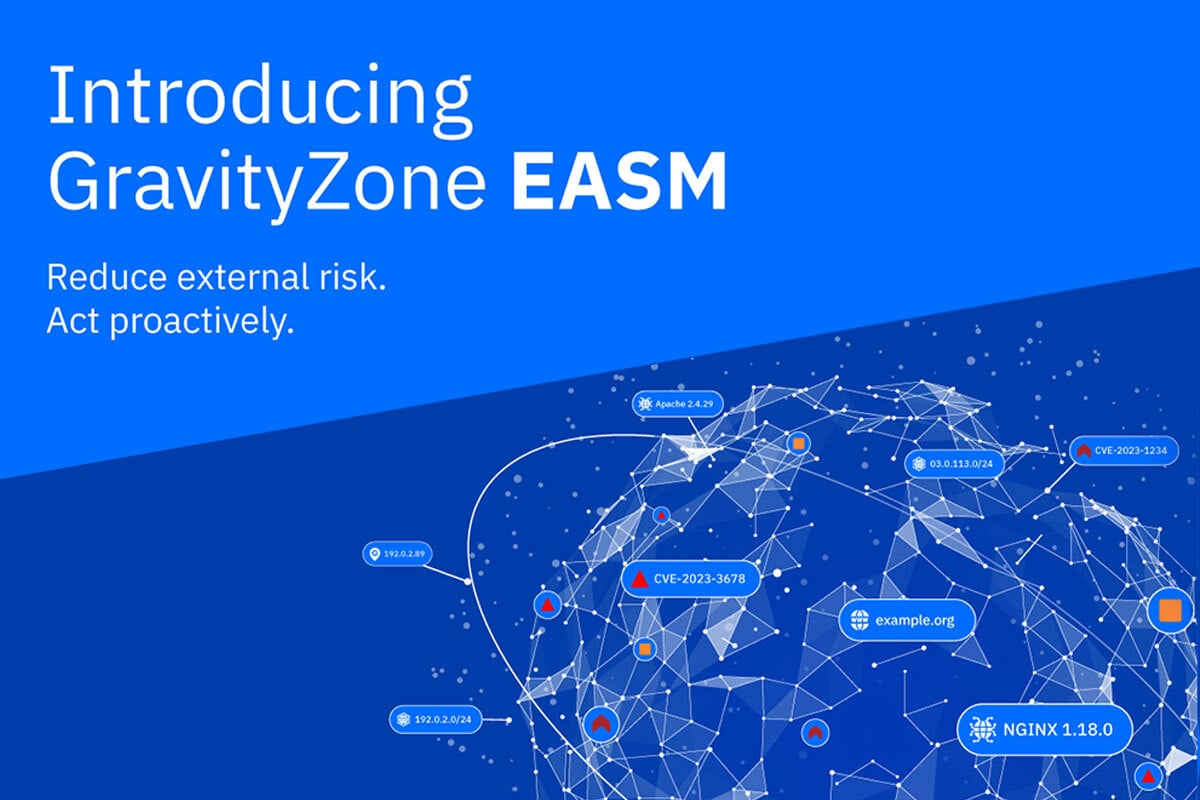5 Cybersecurity Lessons Leaders Can Take Away from Formula 1 Racing

Steering a business to the forefront of its industry requires not just innovative thinking, but also the ability to extract insights from the most unexpected quarters. This is particularly true in the realm of cybersecurity, where agility, precision, and advanced strategies determine the winners from the rest. Drawing parallels from the high-speed world of Formula 1 (F1) racing, this article unveils five crucial cybersecurity lessons leaders can apply to navigate the digital landscape with the same finesse as navigating the most challenging racetracks. Discover how the adrenaline-fueled tactics of F1 can empower your cybersecurity approach, propelling your organization to new heights of success and security.
There are a lot of parallels across cybersecurity and F1, and department leaders can gain a lot of insight by understanding how these overlapping principles can help create winning teams and resilient organizations.
1. Speed and Visibility Dictate Success
On the racetrack, and in the world of cybersecurity, speed is arguably one of the most important qualities to consider. However, a race isn’t simply won by how fast a car is but how quickly you can adapt. On any given race, the track, car, and even weather conditions can change how things need to be handled. The faster a driver can adapt to these changes, the better equipped they’ll be throughout the entire race — giving them the edge against their competitors.
On average, F1 cars are known to accelerate from 0 – 60 mph in less than 3 seconds and can reach maximum speeds past 220 mph. As a result, the top reaction time of top F1 drivers is 0.2 seconds. This reaction speed isn’t just for driving, but for the countless number of details that can change during a race. Because there are so many variables, visibility is extremely important, which is why an F1 car is equipped with over 500 IoT sensors.
Organizations also need to prioritize having maximum visibility over their environment alongside speedy responses. As threat landscapes change and attack surfaces shift, how quickly a department can react to a security compromise will dictate the damage a threat actor can do. The need for speed and visibility should be a top consideration when a cybersecurity leader is developing their strategy, looking to purchase new tools and technology, and taking on new cybersecurity partners.
2. Response Capabilities Make the Difference
F1 races range between 44 and 78 laps in a single race, meaning there’s a lot of room for errors, issues, and accidents that require immediate response and attention. Even slight shifts and subtle changes to a track or a car’s condition requires quick adaptation to maximize the chances of a driver’s success.
In the same way, an organization’s reaction time to a known threat, security incident, or even a discovered vulnerability can make the difference between a devastating compromise or a contained issue. An organization with an extended detection and response (XDR) solution and improved response capabilities can shorten recovery times.
Cybersecurity leaders should prioritize a cybersecurity strategy that creates a department built to react. Think of how quickly your department can act if:
- A zero-day vulnerability is discovered, affecting your systems.
- Your infrastructure changes significantly (think of another cloud database or an entirely new office opening).
- Your organization changes a major third-party provider that has access to sensitive company assets.
- New CVEs are discovered that impact your company.
Your ability to move quickly should be baked into your cybersecurity department’s capabilities. The quicker you can react, the less risk your organization is exposed to.
3. Innovation Requires Out of the Box Thinking
F1 racing relies heavily on technological innovation. Companies invest in R&D to gain a competitive advantage, looking to improve a car’s performance, resiliency, or, as we covered earlier, find new and more efficient ways to track key metrics.
Some of the major advancements we’ve seen include advanced computer systems capable of analyzing millions of data points in real time during a race, as well as engineering advancements that improve performance and fuel efficiency — tech that has been passed down to consumer vehicles.
The technological innovations aren’t just designed to increase a car’s top speed. Races are won through so many other factors because competitive edges are so hard to gain.
In the same way, cybersecurity departments need to think outside the box when it comes to innovation. Technological advances are continuing to improve defenses against novel threats, but the cybersecurity industry has matured beyond just straightforward protection.
Cybersecurity departments looking to mature should look past solutions that solely focus on prevention and instead leverage new technological innovations that also include AI-powered analytics, advanced detection and identification software, and platforms designed to provide full visibility into complex environments, especially cloud-based ones. However, departments should also be thinking outside of the box when it comes to their solutions and look for vendors that offer:
- Operational ease and efficiency: Overly complex or noisy solutions lead to overwhelmed departments.
- Faster time to security: Speed is the name of the game when it comes to be defense and response capabilities.
- Fully serviced security offerings: For resource and staff-strapped departments (which are numerous), managed security vendors are key.
4. Success Relies on Effective Teamwork and Collaboration
F1 teams are made up of a large number of people, all with the singular goal of ensuring the driver and car can perform at the best of its abilities. This is done via collaboration, communication, and speed, all qualities any cybersecurity team can appreciate.
However, for optimal performance, this culture of teamwork and collaboration needs to extend beyond an organization’s cybersecurity department. Just like there are multiple roles and responsibilities dedicated to a single car and racer, there are multiple stakeholders and departments affected by any security incident, compromise, or data breach. This includes:
- Legal: A team that addresses compliance and regulatory issues.
- PR & Communications: To help communicate issues to the public and the rest of the company.
- Executives and Department Leaders: Who provide top-down guidance to affected departments.
- Finance: Depending on the severity of the issue and what’s at stake, the finance organizations will likely play a significant role.
This is in addition to any departments where the compromise is occurring as well as IT and cybersecurity who are the first line of defense. The closer and faster these teams and stakeholders can mobilize in the face of an issue, the faster they’ll work to contain an issue, leading to a relatively painless recovery.
This is why an effective cybersecurity leader should work to create a culture of security beyond their department and work with stakeholders to ensure they know their roles and responsibilities in case a security incident does happen. Proactive communication and collaboration are needed for organizational success.
5. Trust is Necessary for a Team to Work Well
Given the speed at which all involved parties in a team move in F1 racing, trust is incredibly important. Drivers need to trust their team as any second guesses or hesitation may lead to precious seconds lost, making the difference between a race won or lost.
In much the same way, cybersecurity leaders need to trust in their solutions, processes, controls, tech, and team. However, for both cybersecurity and F1 teams, this trust shouldn’t be blind.
Leaders should test these measures to ensure they’re working as intended, conduct annual assessments and ongoing scenario planning and pen tests to see whether there’s any gap in performance or if any team doesn’t have the resources necessary to perform optimally.
By checking and testing your organization’s ability to respond and perform in the face of a potential attack, you can trust that they’ll act as they should when a real compromise scenario does occur, giving you the time and space to make important decisions quickly and react to any unforeseen circumstances.
In the fast-paced realms of Formula 1 and cybersecurity, success hinges on speed, agility, and the power of innovation. Just as F1 teams fine-tune their strategies and machines for peak performance, cybersecurity leaders must also adapt, innovate, and collaborate to safeguard their digital landscapes. By embracing the lessons from the racetrack—speed and visibility, rapid response, outside-the-box thinking, effective teamwork, and trust—we can steer our organizations towards greater security and success. The high-speed world of F1 can inspire cybersecurity approaches, propelling infosec teams to victory in the digital race against threats.
Accelerating Cybersecurity: Bitdefender’s Together with Scuderia Ferrari in 2024
Bitdefender, a Ferrari Team Partner, has recently unveiled enhancements to its sponsorship for the 2024 racing season. These improvements include an enhanced display of the Bitdefender logo and brand symbol on the crown of Scuderia Ferrari drivers' helmets and on the official T-shirts of both the drivers and team principal. In 2024, the partnership between Bitdefender and Scuderia Ferrari will also include private events featuring drivers and technical team members, hot laps at the Fiorano circuit in Italy, factory tours, garage access, and other exclusive marketing activities.
Highlights include:
- Enhanced brand exposure with the display of the brand symbol near the Bitdefender logo on the crown of the drivers' helmets.
- Logo placement on the T-shirts of drivers and the team principal, starting at the Formula 1 Gulf Air Bahrain Grand Prix 2024, in addition to the team racing suits, team uniforms, drivers' race suits, and undergarments.
- Strategic positioning of the Bitdefender logo on the halo sides of the SF-24 single-seater driven by Charles Leclerc and Carlos Sainz.
"We're thrilled to kick off the 2024 season alongside our partners at Scuderia Ferrari. Fans will now notice an upgraded presence of the Bitdefender brand on key safety components crucial for driver protection: the drivers’ apparel, the helmet, and the halo," said Florin Talpeș, CEO, and Co-founder of Bitdefender. "Following the extension of our partnership with Ferrari in May 2023, when Bitdefender solutions were integrated into the company's security operations, we've adjusted how our logo is showcased on these elements to emphasize our dedication to safeguarding our customers' data, earning their trust in the ongoing battle against cybercrime."
Last year, Bitdefender expanded its partnership with Ferrari S.p.A. to provide Bitdefender Advanced Threat Intelligence to the company's worldwide operations. Ferrari S.p.A. integrated Bitdefender Advanced Threat Intelligence into its Security Operations Center (SOC) to help Ferrari security analysts quickly validate and triage alerts, improve threat hunting, and speed up incident response. In September 2022, Bitdefender announced a multi-year partnership with Ferrari S.p.A. to become a Team Partner for Ferrari, competing in the FIA Formula 1 World Championship®. This partnership is a natural alignment between the two companies, highlighting the power of data, humans, and machines working together to excel.
tags
Author

Josue Ledesma is a writer, filmmaker, and content marketer living in New York City. He covers cyber security, tech and finance, consumer privacy, and B2B digital marketing.
View all postsRight now Top posts
FOLLOW US ON SOCIAL MEDIA
SUBSCRIBE TO OUR NEWSLETTER
Don’t miss out on exclusive content and exciting announcements!
You might also like
Bookmarks










